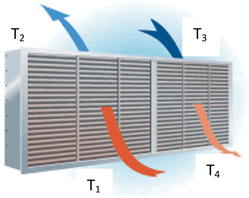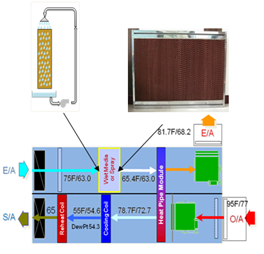White Papers - Energy Recovery Heat Pipes
Today’s Paradigm for Air-to-Air Heat Recovery– Part 1
This paper is the first part of a two-part paper that discusses 4 new/updated models into the paradigm for AAHX. One of the models states that the Recovery Efficiency Ratio should be used as part of the evaluation criteria of all Air‐to‐Air Heat Exchangers. The HVAC system designer now has access to adjacent parallel flow and separated heat pipes. In addition, the paper delves into how heat pipes should selectively replace enthalpic energy exchangers where there isn’t a demonstrated need for latent exchange.

Today’s Paradigm for Air-to-Air Heat Recovery– Part 2
This paper is the second part of a two-part paper that delves deeper into a model that heat pipes can selectively replace all types of enthalpic AAHX, including energy wheels and membrane plates. The paper examines three important perspectives when deciding to replace an enthalpic AAHX: what are the benefits and trade-offs, how to still meet building standards and codes, and experienced engineering judgment can help with certain aspects of the decision.

A Primer on Recovery Efficiency Ratio
This paper examines the Recovery Efficiency Ratio (RER) and its implications for the different types of Air-to-Air-Heat Exchangers, and how it applies to heat pipes. Historically AAHX have only been measured by Effectiveness, which does not include any reference to the energy cost of obtaining the saved MBH. The Recovery Efficiency Ratio (RER) was introduced by AHRI in 2003 and is defined as “the energy recovered divided by the energy expended in the recovery process.”

Indirect Evaporative Cooling with Heat Pipes
Indirect Evaporative Cooling (IEC) is a well‐proven psychrometric process, that when properly applied, greatly increases the effectiveness of HVAC energy recovery systems. The paper discusses the difference between direct evaporative cooling (DEC) and IEC, as well as the benefits, obstacles, and advances in IEC with heat pipes.


